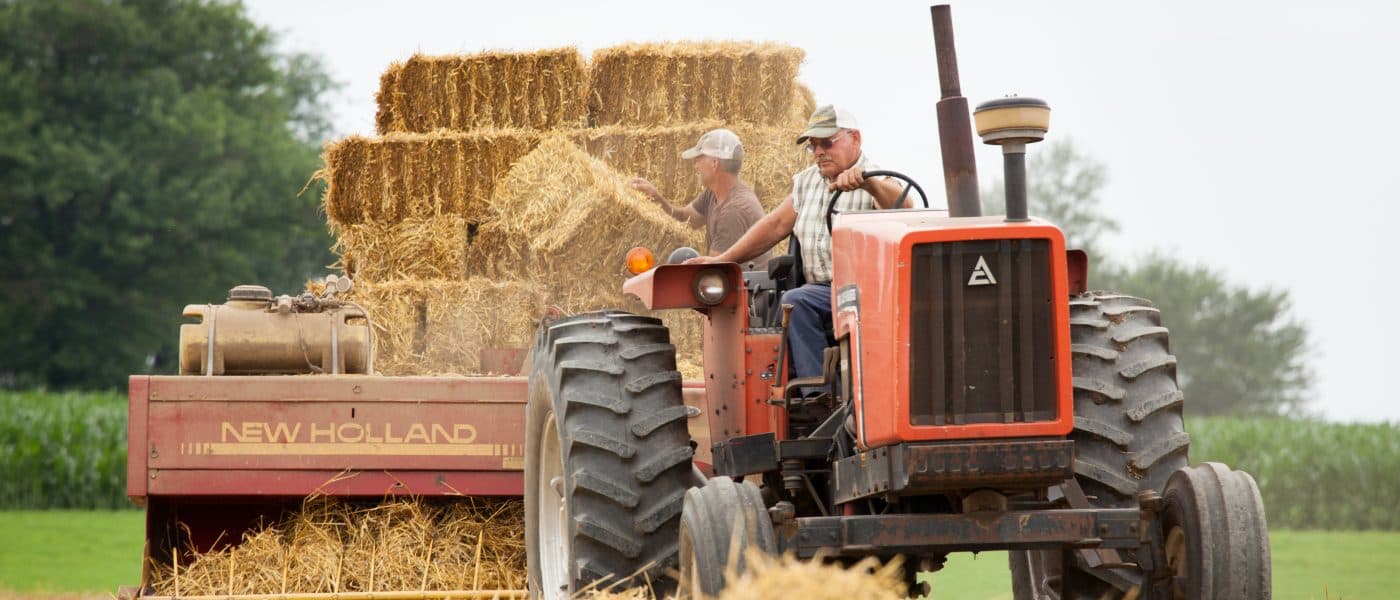June 2008
Dear Laura,
I try to buy local and from family farmers whenever possible. With veggies this is easy, but I am having a hard time finding meat on a regular basis. I see livestock farms all over the countryside, so why is it so hard to find meat from area farmers?
Brett Walker
Michigan City, Indiana
Hi Brett,
Thanks for writing. This is indeed an excellent question to spend some time with this month. I think your observation is very important at this exact moment. As a movement of folks who care about supporting family farmers and enjoying the quality food that they grow, we’ve done a good job with fruits and veggies. I would wager that if we did a poll asking people to tell us the most recent local product they ate that it would be a fruit or vegetable or at the very most a dairy product. For me, it was salad greens, before that an apple and some duck eggs. However, a person who recently feasted on local meat would be a little harder to find. Not impossible, but certainly less common. So you ask: “Why is it so hard to find local meat?” As always, there are a couple of big reasons, but on the bright side there are also a lot of folks working to remedy this problem.
There are a tremendous number of policies and regulations that aim to ensure that meat for sale to the general public is safe. With the exception of small amounts of poultry, in most states farmers cannot butcher their own animals or sell any meat products that aren’t USDA inspected. This means that animals must be transported to a local processing plant or slaughterhouse that is federally inspected to be turned around for sale.
And here is where it gets tricky: local processing plants are hard to come by. Slaughterhouses and processing plants have suffered, just like family farmers, from the “get big or get out” mentality of large-scale agriculture in the U.S. In Iowa, a major meat producing state, there were 550 small processing plants in the 1960s and now there are fewer than 200. In Massachusetts, where I live, only one slaughterhouse remains, though a second plant is being rebuilt after a fire a few years ago. Scarcity of processing facilities is a national problem. The USDA’s Food Safety and Inspection Service reports that about 200 plants went out of business between 2001 and 2005.
So, finding someplace to have your animals butchered locally is a significant limiting factor for farmers who want to direct market their meat products. Keep in mind also that many small facilities are limited by their size and staff, which limits the number of animals they can process. A small family-run operation may only be able to butcher 100 animals a week. In cases like this, farmers actually have to get their livestock on waiting lists. Add to the limited capacity of the plants the fact that many small farmers are raising niche products, like meat from heritage breeds or organic livestock, which means that they need to find a processing plant that can accommodate different sizes and shapes of animals and/or be certified organic. These additional requirements make it even harder to find a good fit in a processing plant and certainly limit the chances of finding a local facility.
The alternative for many farmers is to ship their animals over long distances to a facility that can meet their needs, increasing the stress on the animals and the cost to the farmer. For all of these reasons, and probably several more, most livestock farmers sell their animals to a wholesale market before processing. The animals are butchered, resold to a distributor and turned around again to the customer at a grocery store or restaurant. This process can take up to a month!
In short, locally raised and processed meat products are hard to find because the infrastructure is limited; farmers often cannot afford the extra costs associated with local processing; and for many years our food system has relied on the easy way out: farmers sell their animals to the big companies (four pretty much dominate beef, pork, and poultry markets) and the big guys do the leg work. But as your question points out so well, the scales are starting to tip toward the local. Consumers like you have gotten their feet wet by buying local with fruits and veggies. Now it’s time for more!
A full-scale campaign to rebuild local and niche market processing facilities across the country would be a nice place to start but without a serious bankroll, farmers and their supporters have started to dream up some interesting alternatives. At the cutting edge (oh bad pun!) of this reclamation of our meat is the invention of the innovative mobile slaughterhouse. Several years ago, I was lucky enough to meet with a group of farmers in Washington State who pioneered this invention.
The refrigerated car, which looks like a horse trailer on the outside, is equipped to process any animal, from birds to cows. It is USDA-certified and can be run by one person. I should note that the livestock do require further processing to be reduced to portions or cuts, but farmers see significant benefit in keeping the animals on the farm for slaughter, which significantly reduces their stress. Many believe reducing the animals stress level at slaughter increases the quality of the meat. Another benefit to the mobile processing facility is that the fees for service, which can be as high as $75 for cattle and other large livestock, go to support the on-going service to local farmers. After three years in operation, the mobile unit was up and running with 45 farmer customers.
There are also interesting things afoot in my neighboring state of Vermont where Farm Aid-funded group Rural Vermont is taking local meat to the next level with their Farm Fresh Meat Campaign. The organization has already won the right for farmers to slaughter and butcher up to 1,000 birds (poultry only for right now) at a time. The birds can be sold at farmers markets and to restaurants. Previously they were only allowed to be sold on the farm itself. This year, Rural Vermont is pushing to expand the local meat market with legislation that would allow farmers to contract with customers like you, who would buy the birds before slaughter, and then process the carcasses into cuts of meat on the farm. This kind of legislation would essentially allow the farmer to stay actively involved in all of the steps of raising, processing and selling meat products in their local community.
Another exciting thing going on for buying locals meats is the development of meat CSAs. This model doesn’t exactly address the processing and infrastructure issues but it is worth mentioning if you simply want to know more about how to buy local. Community Supported Agriculture (or CSA) was pioneered here in New England and essentially runs on the principal that community members buy shares in a farm and in return they get weekly portions of the harvest through the growing season. Farms using this model started primarily in veggies but many have expanded to include dairy products and meat. Depending on the type of farm, you can either buy a share for a specific kind of meat or a general share with several kinds in each delivery. This is another route to ensure that your meat dollars stay in town.
I think that about wraps it up. Local meat can be hard to find because our current food system favors big livestock producers and big processing facilities. But as you can see, the combination of demanding consumers, tenacious farmers, and entrepreneurial thinking are helping turn the ship around steak by steak. Developing the infrastructure to keep processing local will help increase local supplies of meat and new legislation that ensure the safety of on-farm processing will do the same. So buy local meat when you can find it, and next time you are at the farmers market (or diner) just ask some area farmers the same question. There might be an exciting effort afoot in your neck of the woods that could use your enthusiasm and support!

